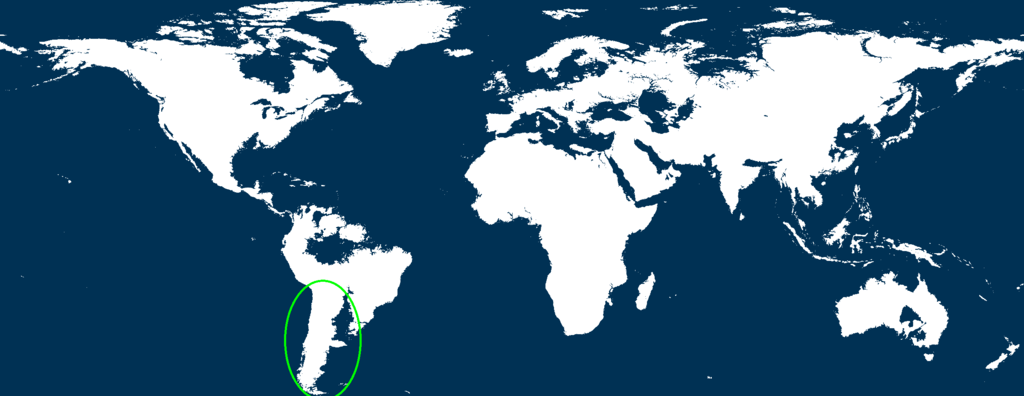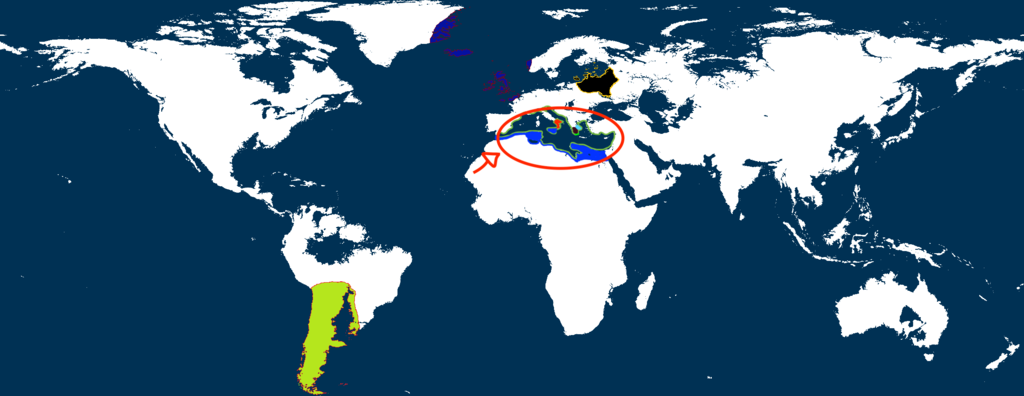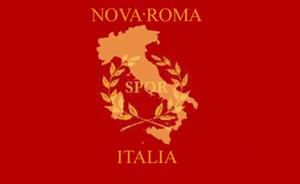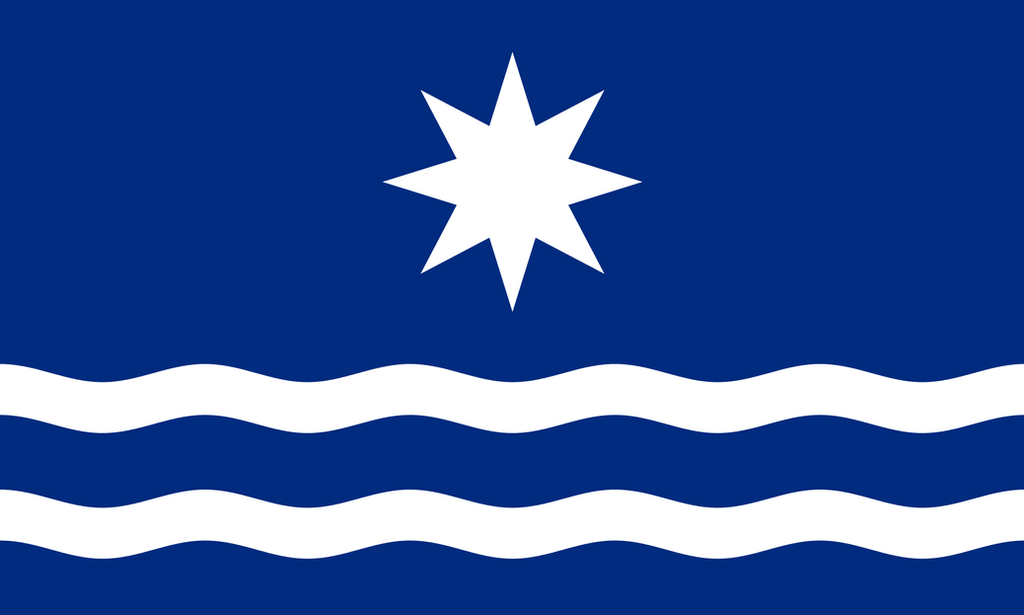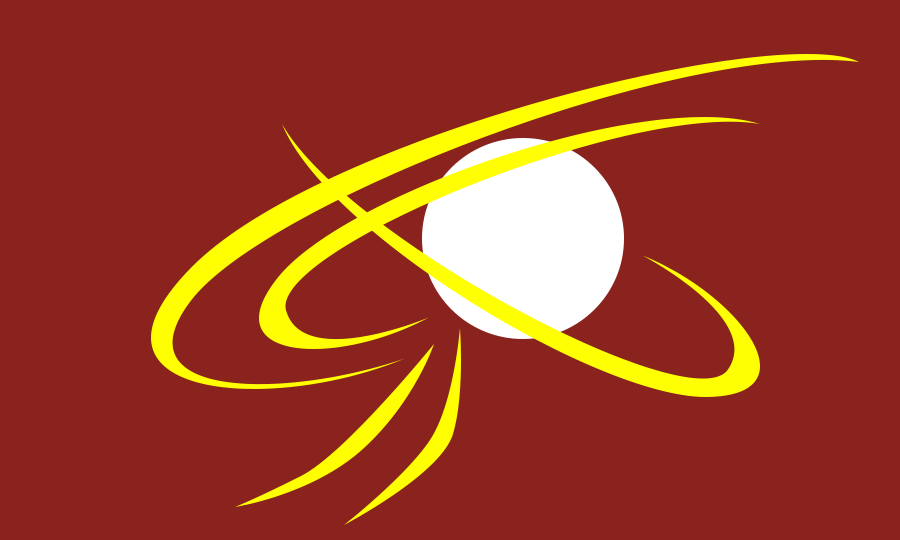Kingdom of Britannia
"The greatest duty...is service to others."
Flag/Banner
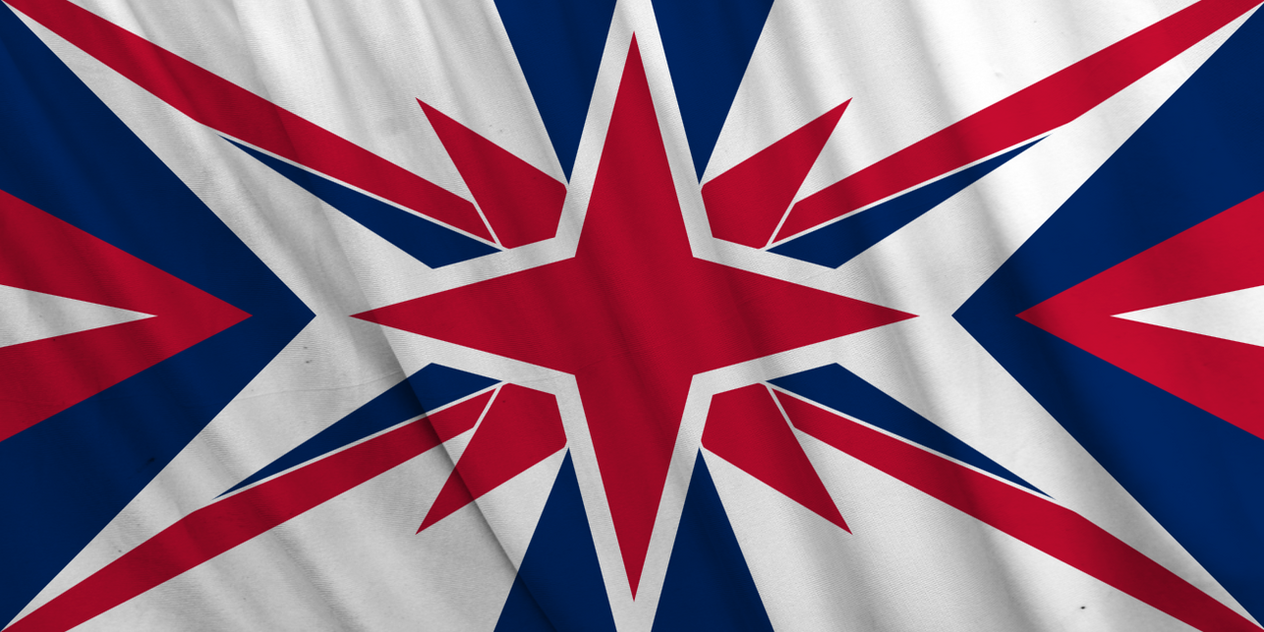
Unitary technocratic semi-constitutional monarchy
The Monarch is both the head of state and head of government, responsible for the executive branch of governance. Both the Commander-in-Chief and King/Queen of the Kingdom of Britannia. While having exercised once absolute authority during the Days of Rebirth, most of the legislative power has been delegated to the House of Intellectuals. The Monarch is still responsible for signing new laws into motion, vetoing existing laws, declaring war, in-charge of foreign and national affairs.
The House is responsible for the writing of new laws and policies into power. Compared to the olden days of democracy - the House has only a hundred elected members, with ninety of them belonging to the Ministries and the other ten up for popular choice.
When the House of Intellectuals was made official, the Lower Chamber of Debate took over the function as an advisory to the Monarch. Most people part of this are chosen on a random basis from a predetermined source of requests. They are a mostly non-governmental function, that is easily accessible to the common folk.
The Chamber of Assembly houses most of the Ministry that are responsible for the administrative oversight of the Kingdom. Most people here get elected on a Ministry Box - as they get elected directly into the Ministry of their choice. As most Ministries operate a certain branch of administration - most require a decent degree and education in such a field. The only Ministry with looser ties is the Ministry of Education.
Currently there are ten Ministries in the Kingdom of Britannia:
Ministry of Defense
Ministry of Agriculture
Ministry of Resources and Extraction
Ministry of Education
Ministry of Energy
Ministry of Engineering
Ministry of Health
Ministry of Labor
Ministry of Infrastructure
Ministry of Science and Research
Currently there are ten Ministries in the Kingdom of Britannia:
Ministry of Defense
Ministry of Agriculture
Ministry of Resources and Extraction
Ministry of Education
Ministry of Energy
Ministry of Engineering
Ministry of Health
Ministry of Labor
Ministry of Infrastructure
Ministry of Science and Research
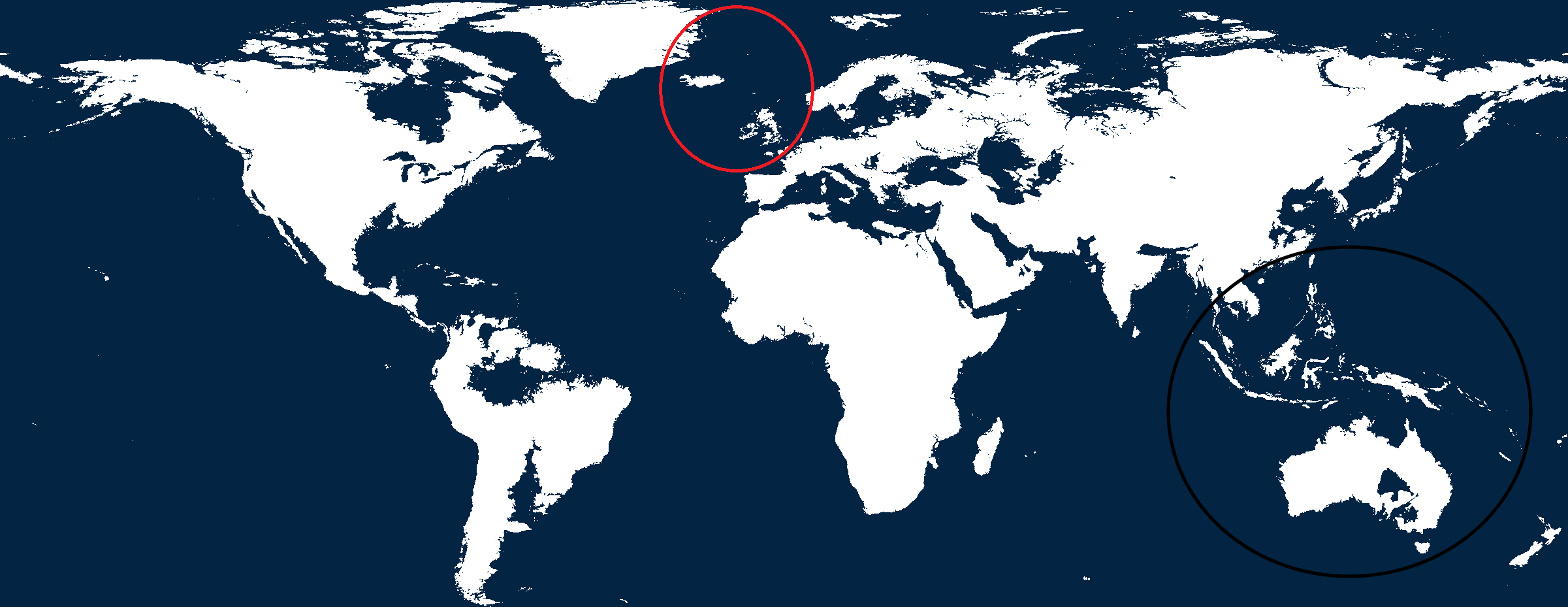
65% Agnostic
25% Folk religion/Protestant mixed religion
10% Irish-Catholic
25% Folk religion/Protestant mixed religion
10% Irish-Catholic
77% Euro-White (Majority)
23% Mixed (Euro-Asian)
23% Mixed (Euro-Asian)
The current Kingdom is a mix of old British, Irish and Celtic Revivalism. By this point in history, it's almost impossible to tell the difference between the three - in art, language or music - with most labeled under the same category.
In Britannian' society, people are both hard-working, highly-educated and cultured, a mixture that makes them be both a bit xenophobic and elitist towards outsiders. They are a country who has both a very rich and long history of art, music and media, yet whom also sees nothing wrong with state-controlled euthanasia and eugenics, where intelligence is a determination for civil, voting and economic rights.
In Britannian' society, people are both hard-working, highly-educated and cultured, a mixture that makes them be both a bit xenophobic and elitist towards outsiders. They are a country who has both a very rich and long history of art, music and media, yet whom also sees nothing wrong with state-controlled euthanasia and eugenics, where intelligence is a determination for civil, voting and economic rights.
Saxonia; District
Icelandia; District
Britanny; Region
Gronland; Region
Norga; Region
New Edinburgh; Capital
Bergen; Military Outpost
Rennes; Minor City
Rejkav; Major City
Icelandia; District
Britanny; Region
Gronland; Region
Norga; Region
New Edinburgh; Capital
Bergen; Military Outpost
Rennes; Minor City
Rejkav; Major City
When World War Three was unleashed, nobody expected it. Nobody in MI6, the CIA, NATO or likely even the GRU could have predicted it - nor of the wide-spread destruction unleashed. Despite the numerous preparations set in place during and after the Cold War - the United Kingdom wasn't spared nuclear destruction. The missile defense network around the British Isles managed to destroy some - yet Russian warheads got passed and destroyed the House of Parliament. While numerous officials were in the middle of talks about trying to stop the escalating crisis.
Smaller tactical warheads also struck the regional parliament in Ireland, Wales and Scotland. In one swoop, most of the British leadership was killed off. Although, such an act had been prepared for - namely in the form of the Cromwell Protocol.
The Cromwell Protocol had been signed into law during the darker days of the Second World War - when fear of Nazi bombing and invasion, set into motion a secret law that would be utilized to allow England to maintain a position of leadership and authority, in case most of Parliament and any successor were killed off. The Cromwell Protocol had been renewed and had added authority, included within the Protocol during the days of the Cold War.
While after the Collapse of the USSR, the Cromwell Protocol was retired - yet in the rising tension of the 21st Century, it was renewed for another two decades. The motion of the Cromwell Protocol had been up for renewal in 2020 - although, two years before that everything changed.
With most of Parliament and some of the Royal Family dead - the Cromwell Protocol went into motion, Prince William, Duke of Cambridge - was granted de-facto control over the Executive, Legislative and Judicial Branch of the Government and had de-facto authority of the British Armed Forces. Although by that point, he was the ONLY legal authority remaining.
A cry for assistance to the British Isles was given to all ships flying under the flag of the United Kingdom. While the British Army was deployed to help in maintaining order. Namely the Crown had the plan into evacuating as many people as they could to the various surviving Commonwealth nations. While the initial plan had been to evacuate people in way of the fallout - it soon became evident, that nuclear exchange had happened across the entire world. Thus only a fraction of British society could be saved - while the rest would be left behind.
While most of the Royal Family was prepared to flee and abolish the British Monarchy - a few handful of them were willing to stay and brave the storm. Namely they'd stay and not run away - as was their duty as Royalty: to lead when all hope was lost and people looked to them for guidance. Those whom stayed, rallied around the leadership of the young Mary Windsor - 77th in-line, yet now Queen of England.
---
Her rule could be considered both brutal, bloody yet necessary. With fallout killing both people and crops, chaos breaking out, separtism and sectarian violence on the rise, the entire British Isles needed to be pulled under the authority of the Crown - to even survive a day. Thus Executive Order 47 was given to all Royal Armed Forces.
Queen Mary allowed most people who wanted, a last chance of escaping England - yet stated, that anybody staying would follow the order of the Crown. Those who would deny this declaration would be purged out with utmost efficiency. Once the deadline fell, anybody resisting was put down with the harshest and swiftest brutality.
Anybody engaging in resistance, be it religious, racial, political, economic or social - were eliminated. Their leaders captured, tortured and killed. While the resisting territories were bombed with naval cannons or artillery fire. The brutal campaign to re-unite the scattered cities, purge the rebels and save as much infrastructure and resources as possible took nearly forty years. The situation further hampered with rising sea levels that started swallowing up more and more of the British mainland.
With Ireland falling into the sea and into chaos, Mary III also had the Royal Armed Forces sweep across Ireland and secure it under British control. By the end of 2058, what was called the Days of Iron had come to an end - as much of newly formed British Archipelago came to rest in the hands of the English Crown.
Mary the III, wouldn't live beyond her sixties, as once the last rebel holdout had been destroyed - she abdicated in favor of her son, before she commited suicide via gun.
Smaller tactical warheads also struck the regional parliament in Ireland, Wales and Scotland. In one swoop, most of the British leadership was killed off. Although, such an act had been prepared for - namely in the form of the Cromwell Protocol.
The Cromwell Protocol had been signed into law during the darker days of the Second World War - when fear of Nazi bombing and invasion, set into motion a secret law that would be utilized to allow England to maintain a position of leadership and authority, in case most of Parliament and any successor were killed off. The Cromwell Protocol had been renewed and had added authority, included within the Protocol during the days of the Cold War.
While after the Collapse of the USSR, the Cromwell Protocol was retired - yet in the rising tension of the 21st Century, it was renewed for another two decades. The motion of the Cromwell Protocol had been up for renewal in 2020 - although, two years before that everything changed.
With most of Parliament and some of the Royal Family dead - the Cromwell Protocol went into motion, Prince William, Duke of Cambridge - was granted de-facto control over the Executive, Legislative and Judicial Branch of the Government and had de-facto authority of the British Armed Forces. Although by that point, he was the ONLY legal authority remaining.
A cry for assistance to the British Isles was given to all ships flying under the flag of the United Kingdom. While the British Army was deployed to help in maintaining order. Namely the Crown had the plan into evacuating as many people as they could to the various surviving Commonwealth nations. While the initial plan had been to evacuate people in way of the fallout - it soon became evident, that nuclear exchange had happened across the entire world. Thus only a fraction of British society could be saved - while the rest would be left behind.
While most of the Royal Family was prepared to flee and abolish the British Monarchy - a few handful of them were willing to stay and brave the storm. Namely they'd stay and not run away - as was their duty as Royalty: to lead when all hope was lost and people looked to them for guidance. Those whom stayed, rallied around the leadership of the young Mary Windsor - 77th in-line, yet now Queen of England.
---
Her rule could be considered both brutal, bloody yet necessary. With fallout killing both people and crops, chaos breaking out, separtism and sectarian violence on the rise, the entire British Isles needed to be pulled under the authority of the Crown - to even survive a day. Thus Executive Order 47 was given to all Royal Armed Forces.
Queen Mary allowed most people who wanted, a last chance of escaping England - yet stated, that anybody staying would follow the order of the Crown. Those who would deny this declaration would be purged out with utmost efficiency. Once the deadline fell, anybody resisting was put down with the harshest and swiftest brutality.
Anybody engaging in resistance, be it religious, racial, political, economic or social - were eliminated. Their leaders captured, tortured and killed. While the resisting territories were bombed with naval cannons or artillery fire. The brutal campaign to re-unite the scattered cities, purge the rebels and save as much infrastructure and resources as possible took nearly forty years. The situation further hampered with rising sea levels that started swallowing up more and more of the British mainland.
With Ireland falling into the sea and into chaos, Mary III also had the Royal Armed Forces sweep across Ireland and secure it under British control. By the end of 2058, what was called the Days of Iron had come to an end - as much of newly formed British Archipelago came to rest in the hands of the English Crown.
Mary the III, wouldn't live beyond her sixties, as once the last rebel holdout had been destroyed - she abdicated in favor of her son, before she commited suicide via gun.
After the acts of Mary the III, with all of the British Isles under the control of the Crown, the hardest challenges were ahead. Namely what would be called the Days of Hardship was two centuries of a Dark Age - as most people would only understand the notion of working, brutal cold, and the iron-boot of the Crown. While harsh, the people of the slowly developing nation of Britannia were saved the pains of famine and radiation poisoning.
While the Crown exercised absolute authority over everything, many had advisory from the surviving Intelligent Community - giving rise to a technocratic faction during the early days of Britannia. As genetically-modified fish and eatable seaweed was cultivated within the newly formed rivers - while what land remained was planted with cold-hardened crops. A heavily regulated society was also created in those years. Genetic engineering, eugenics, population control and euthanasia was widely utilized - the notion, becoming that any waste of resources without future gain, sadly couldn't be afforded. Thus the policy of eliminating the mentally and physically ill became a part of Britannian policy until genetic engineering eliminated most such issues during the 2200s.
Education became widely available and mandatory to attend - as Britannia lacked raw resources, they had to squeeze out the most of every asset they had - the only thing in abundance was people. More and more complex systems and machinery were established. Recycling became a mandatory hobby, the notion of blind ignorance became anathema as the ultimate insult to being human. While the notion of democracy started gaining traction once more, it was quickly squashed by both the Crown and the intellectual elite before it gained any major support. Namely both factions favored more of a technocratic state - build upon by the notions of logic and reason - instead of the ignorance of the mass, demagoguery and subversion of the rule of law.
In 2260, the House of Intellectuals was established, as an advisory body to the ruling Monarch. While regional leaders were allowed to be elected from the educated elite by their peers.
While the Crown exercised absolute authority over everything, many had advisory from the surviving Intelligent Community - giving rise to a technocratic faction during the early days of Britannia. As genetically-modified fish and eatable seaweed was cultivated within the newly formed rivers - while what land remained was planted with cold-hardened crops. A heavily regulated society was also created in those years. Genetic engineering, eugenics, population control and euthanasia was widely utilized - the notion, becoming that any waste of resources without future gain, sadly couldn't be afforded. Thus the policy of eliminating the mentally and physically ill became a part of Britannian policy until genetic engineering eliminated most such issues during the 2200s.
Education became widely available and mandatory to attend - as Britannia lacked raw resources, they had to squeeze out the most of every asset they had - the only thing in abundance was people. More and more complex systems and machinery were established. Recycling became a mandatory hobby, the notion of blind ignorance became anathema as the ultimate insult to being human. While the notion of democracy started gaining traction once more, it was quickly squashed by both the Crown and the intellectual elite before it gained any major support. Namely both factions favored more of a technocratic state - build upon by the notions of logic and reason - instead of the ignorance of the mass, demagoguery and subversion of the rule of law.
In 2260, the House of Intellectuals was established, as an advisory body to the ruling Monarch. While regional leaders were allowed to be elected from the educated elite by their peers.
The Days of Expansion was what followed, as radiation levels dropped to more safe levels and the biting cold became less and less harsher - allowing Britannia to re-establish trade with other sovereign regions of the world on a more regular basis. It was around this time, that the Britannian naval power started to be rebuild - under Richard the Fifth, whom wanted to restore to restore the Glory of the Ancient Times. Under his rule, the Crown of Britannia also looked to expand its territory. It sent forces to unify with Britanny, who had both survived the rising sea and resulting chaos and conquer what remained of once Northern France.
Expeditions were also sent into the Icy North to secure both supplies of fresh water from Greenland and also the fertile lands of Iceland - after most of the inhabitants had regressed into tribal societies after the Third World War. This allowed the Kingdom of Britannia both to grow, expand and restore the Royal Navy to old heights - as Global Warming allowed Britannia to access the rich regions of the Artic Circle for both mineral and oil resources.
During those times, they also started to come into contact with other surviving nations - namely those that had reverted to piracy and savagery to survive. The Royal Armed Forces of Britannia fought for several decades against the Neo-Scandivan Pirates, whom utilized hit and run tactics on undefended coastal regions - until many of their ships and bases were torched or captured by the Royal Marines under the aegis of the iron-might of the Royal Navy. As well as, the former pirate port of Bergen was seized by Britannia and also the region around it, renamed Norga.
Expeditions were also sent into the Icy North to secure both supplies of fresh water from Greenland and also the fertile lands of Iceland - after most of the inhabitants had regressed into tribal societies after the Third World War. This allowed the Kingdom of Britannia both to grow, expand and restore the Royal Navy to old heights - as Global Warming allowed Britannia to access the rich regions of the Artic Circle for both mineral and oil resources.
During those times, they also started to come into contact with other surviving nations - namely those that had reverted to piracy and savagery to survive. The Royal Armed Forces of Britannia fought for several decades against the Neo-Scandivan Pirates, whom utilized hit and run tactics on undefended coastal regions - until many of their ships and bases were torched or captured by the Royal Marines under the aegis of the iron-might of the Royal Navy. As well as, the former pirate port of Bergen was seized by Britannia and also the region around it, renamed Norga.
As Britannia gained power, so too did the power of its people prosper. Resources were once again flowing into the Archipelago, allowing some of the more heavy-handed policies to be relaxed or even completely removed. It was around this time, that Britannia started to slowly move from an absolutist monarchy to a more mix of both monarchic and technocratic elements.
Under Elizabeth the Fourth, several bold ideas were put into motion - establishing a self-sufficient state of existence, breakthrough into genetic engineering of the human body and project of a nation build around the ideals of progress, logic and harmony.
By the time of Queen Mary the Wise - the Kingdom of Britannia had established some notions of success. As most people worked to the best of their abilities on a four day-four hour basis - allowing society to be both efficient, precise and with the people a fair notion of success.
It was during the early years of Mary X, that the House of Intellectuals was established as the official Legislature of the Kingdom - similar in a way to the old House of Parlament. While the Monarchy retained executive power and control.
Under Elizabeth the Fourth, several bold ideas were put into motion - establishing a self-sufficient state of existence, breakthrough into genetic engineering of the human body and project of a nation build around the ideals of progress, logic and harmony.
By the time of Queen Mary the Wise - the Kingdom of Britannia had established some notions of success. As most people worked to the best of their abilities on a four day-four hour basis - allowing society to be both efficient, precise and with the people a fair notion of success.
It was during the early years of Mary X, that the House of Intellectuals was established as the official Legislature of the Kingdom - similar in a way to the old House of Parlament. While the Monarchy retained executive power and control.
"Kill millions without remorse, and your a monster. Kill millions with justification, and your a tyrant. Kill millions with regret, and your a ruler."

"Our ancestors once dominated the land and sea. Allowing these filth to continue, is not only illogical but also an unforgivable insult against our people."

"It is time, we regained our planet, our land, our own body from the weakness of the mind."

"The wisest Monarch, knows when to listen, when to speak and when to act."
1x Like





